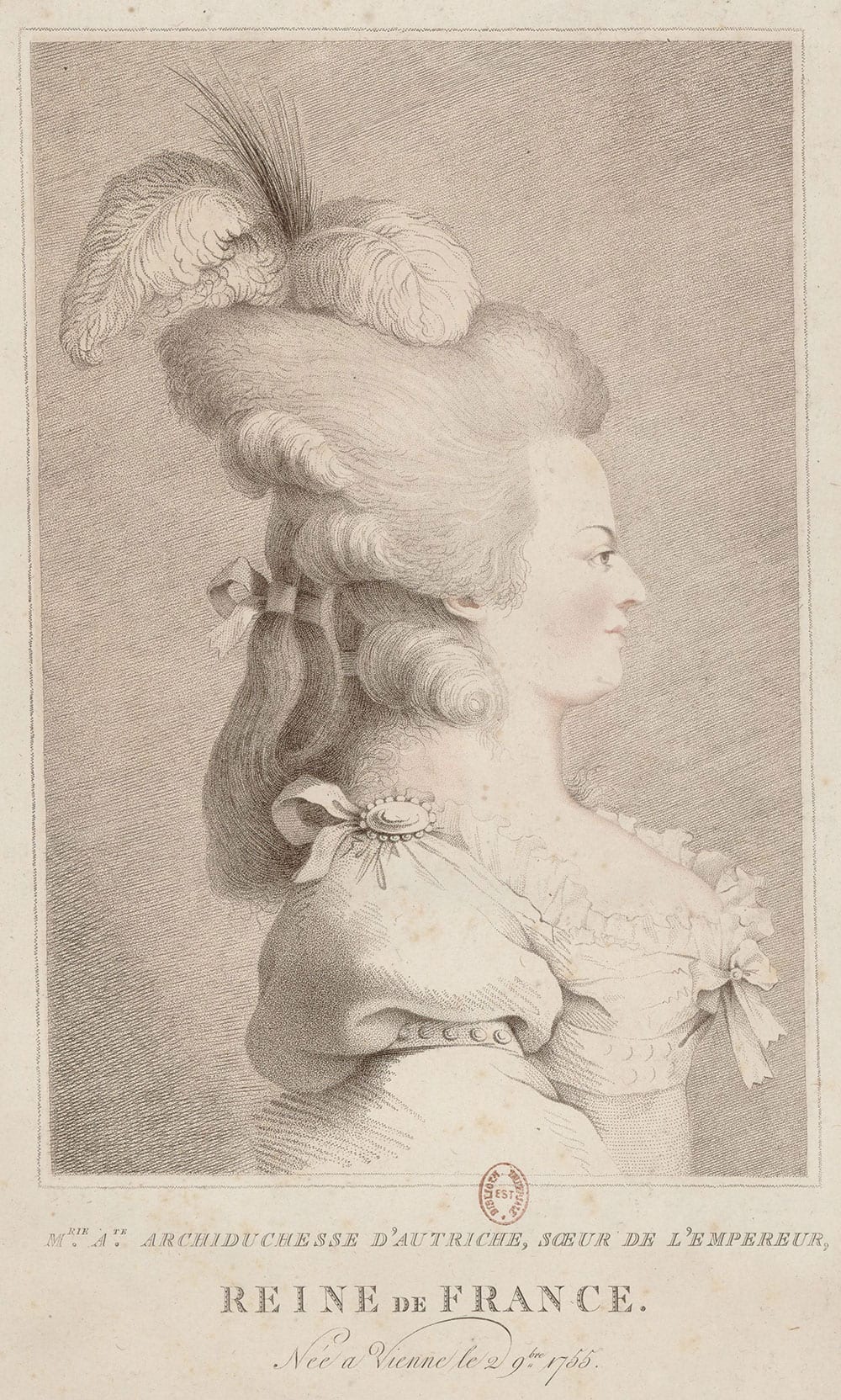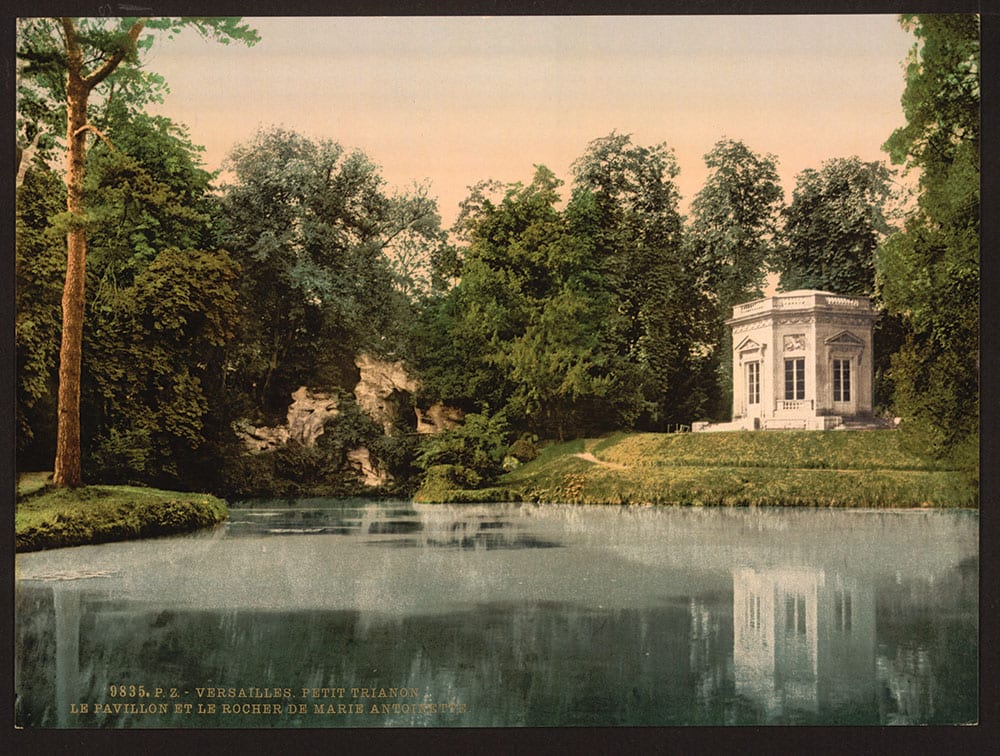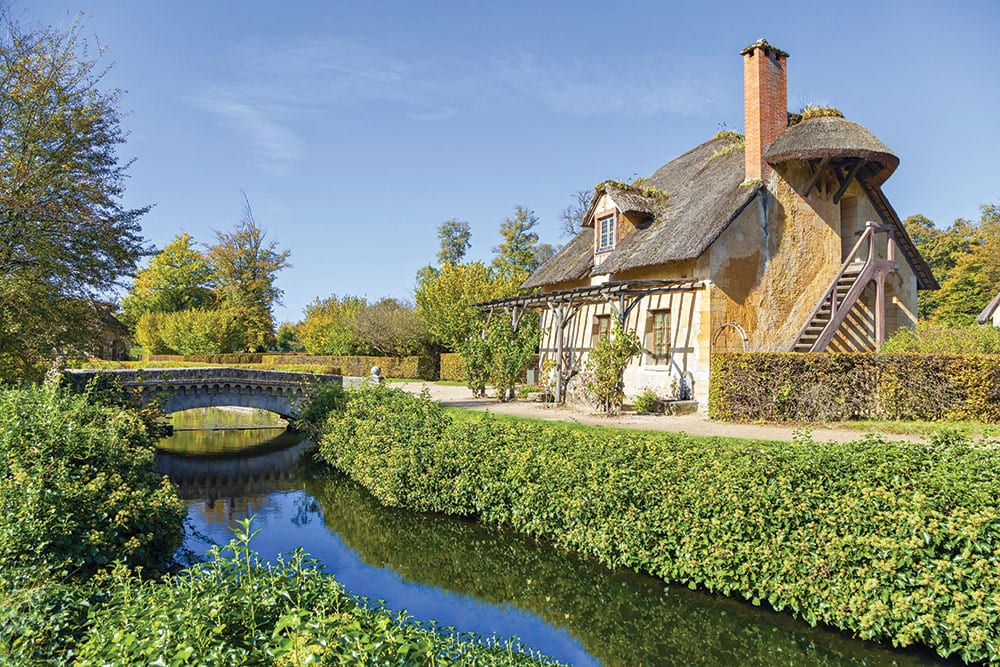When planning a trip to Paris, it is difficult to choose from the myriad of monumental landmarks, works of art, and incredible restaurants the city has to offer. Allow Ulrike Lemmin-Woolfre to take you on a Paris walking tour through the eyes of Marie-Antoinette and become even more in love with the City of Lights.

May 14, 1770, 14-year-old Austrian-born Archduchess Marie-Antoinette Habsburg Lorraine arrived in Versailles to marry Louis XVI and become the Dauphine to the throne of France and, four years later, the last Queen of France. A daughter of Empress Maria Theresa of Austria, Marie-Antoinette grew up in sumptuous palaces and had spent her summers at Schönbrunn Palace in Vienna, strangely evocative of Versailles.
But despite being used to a luxurious life, no doubt arriving at the Château de Versailles must have been extraordinary, even for an already quite spoiled royal bride-to-be. In my search for the places that had an impact on Marie-Antoinette, and on which she had an impact, I wanted to start at the beginning: in Versailles, a mere 10 miles from the center of Paris. The Château of Versailles is one of the world’s grandest palaces and one that held an enormous number of people. It was not simply home to the king and queen, but also the seat of the French government.
Enter the Private Palace
It was the daily playground of thousands of courtiers and hangers-on as well as the countless staff it took to look after them. It is estimated that some 3,000 courtiers, ministers, and servants lived permanently in its 700 rooms, but the palace could play host to some 20,000 people and often did. Reportedly, palace life was a shock to Marie-Antoinette. Despite having several rooms within the palace to herself and entertaining herself by hosting glittering parties and enjoying becoming a fashion icon, she seemed to find it difficult to adapt.
A young teenager who until then had been an indulged child, she suddenly had to adjust to life in the public eye, the demands of an equally young and inexperienced husband, the court and its constantly gossiping courtiers, and the restrictions that her new station brought with it. To escape the daily hustle and bustle of court and government life, Marie-Antoinette spent a lot of time at the Petit Trianon, which had initially been a gift from Louis XV to his mistress Madame de Pompadour and was gifted to Marie-Antoinette as a private refuge.
Exploring Commodities of the Commoner
Nearly three kilometers from the main building, through the maze of the enormous gardens, even today it feels like a retreat. Fit for a queen. To allow Marie-Antoinette to get even further away from the pressures of the court, she had her own hamlet created within the palace grounds. Complete with thatched cottages, a pond, a working dairy, chickens, and flocks of sheep, it was rumored that she had it built to get closer to “her people,” but visiting this picture-postcard Petit Hameau, I can see why people were appalled by her “playing at” being a commoner.

Petit Trianon at Versailles Palace, the Pavilion and the Rock of Marie Antoinette. Library of Congress / LOC.gov.
Real peasants endured a very different pastoral life and started to resent the self-indulgent royals. Apart from her farm hamlet, one of Marie-Antoinette’s favorite spots in Versailles was the Queen’s Theatre, which she commissioned even though the palace already had its own opera house. She wanted a personal playhouse to indulge her fondness not only for watching plays but also for dabbling in amateur dramatics herself. Seating some 250 people, the little theatre is today the only 18th-century theatre in France still intact and fully functioning.
Marie-Antoinette’s love for the theatre gave me the jumping-off point for a walking tour of places that she would have frequented in Paris, such as the splendid Palais Garnier. Often secretly escaping the palace to drive into Paris, which would have probably taken her an hour’s fast carriage ride, she visited the gilded Palais Garnier with its grand hall, which in my mind is even more sumptuous than the Hall of Mirrors in Versailles, to see plays. On a tour through this magnificent theatre, it is not difficult to imagine a giggling Marie-Antoinette sitting in one of the sumptuous red velvet-clad boxes.

Marie Antoinette’s idyllic and charming farm hamlet, which was certainly a world apart from “her people.” Sergey Dzyuba / Shutterstock.com.
Travel Through the Queen’s Playground
But Paris offered so much more than theatrical relief from Versailles. Marie-Antoinette’s favored dress-maker, Madame Rose Bertin, had her boutique first along Rue Saint-Honoré, still a fashionable hangout today and a joy to window shop on. Later, Madame Bertin’s boutique Au Grand Mogol moved to Rue Richelieu, although the number 13, which was supposed to have housed her atelier, seems to have disappeared. Instead, I pop into the Louvre to see some works by Marie-Antoinette’s personal portraitist, Elisabeth Vigée le Brun (1755-1841). In Versailles, I had already seen some of her work, but to continue the trail, the Louvre is an appropriate royal setting. Elisabeth Vigée le Brun beat the odds to become the artist who would paint 30 portraits of Marie-Antoinette, despite being not only a woman but also a commoner.

Fan from Musée d’éventail (The Fan Museum), where the fans for Sofia Coppola’s Marie Antoinette movie were created. Comedia dell’Arte (1775-1780).
Emerging from the Louvre, I search out the location where the Tuileries Palace would have been, the Paris home the king and queen relocated to in 1789 after the storming of the Bastille—and the one they tried to flee from when history took a sharp turn, not in their favor. Alas, all that remains of the old royal and imperial palace today is the Arc de Triomphe du Carrousel, the arch that Stands in line with the Arc de Triomphe at the end of the Champs Elysees and La Grande Arche de La Defénse. This smaller arch was once the gate to the palace that stood at the entrance to the Tuileries, with the gardens as they are now toward the back of the building.
Visit The Ultimate Garden
Wandering through the Tuileries Gardens, I marvel at the genius of André le Nôtre (1613-1700), the gardener who originally designed the gardens of Versailles and the Tuileries, plus other notable gardens such as Chantilly, Vaux-le-Vicomte and Fontainebleau. Only the best for the royal family. It was that sort of thinking, though, that eventually spelled the downfall of Louis XVI and Marie-Antoinette and French royalty. After their two failed attempts to flee from Paris in 1791 and 1792, they were captured, tried and condemned to death.

Palais Garnier, Opera National de Paris, was a favorite destination of the theatre-loving queen. Julie Mayfeng / Shutterstock.com.
The First French Republic was declared in September 1792. Louis XVI and Marie-Antoinette were first imprisoned together in the ancient Tour du Temple, a historical marker survives on Square du Temple in the Marais. Several months after Louis’ execution, Marie-Antoinette was taken to the women’s prison within la Conciergerie, the rather beautiful former royal palace on the Île de la Cité, steps away from Notre Dame. There she stayed until her execution by guillotine on the Place de la Révolution, now called Place de la Concorde, on October 16, 1793.
Walking Tour Paris: Beneath the City of Lights
After exploring the underground prison cells of the Conciergerie, then strolling through the Tuileries again toward Place de la Concorde with its obelisk, fountains and grand hotels, I walk up to the Madeleine church and stroll toward Rue Pasquier, near the famous department stores on Boulevard Haussmann. The small square was once the graveyard of the Madeleine and the spot where in 1813 Marie-Antoinette’s body was discovered and exhumed. In 1826, the neo-classical Chapelle Expiatoire was built in her honor on the very spot.

Marie Antoinette’s remains are buried at the large medieval abbey church of Basilica of Saint-Denis in the Saint-Denis suburb of Paris. Capture 11 Photography / Shutterstock.com.
Marie-Antoinette’s remains were taken to the Basilica of Saint-Denis, now a suburb of Paris. There, in the royal necropolis of the basilica, she was reburied next to her husband and together with the rest of the kings, queens, princes, and princesses of France. Her statue is appropriately grand, befitting her life and lifestyle.
Paris Bliss
I, after considering so much death and sadness, felt I should finish my Paris walking tour by retracing Marie-Antoinette’s footsteps in a manner she no doubt would have appreciated: I walk down Rue Montorgueil and stop at Patisserie Stohrer, the oldest patisserie in Paris, dating back to 1730, founded in 1730 by her father-in-law King Louis XV’s pastry chef, Nicolas Stohrer. This patisserie baked the sweet things Marie-Antoinette so loved. But while she certainly indulged in pastries and viennoiseries, her notorious quote, “Let them eat cake,” has never been proven true.

The Chantilly baba is a staple of French bakery Stohrer. It is soaked in a delicate rum syrup with delectable vanilla Chantilly cream. Photograph by Géraldine Martins.
Still, nothing wrong with eating some cake, especially if accompanied by some royal tea. So, I also pop into Nina’s at Place Vendôme to buy some of the queen’s preferred tea, which still to this day is flavored with fruit grown within the royal vegetable garden in Versailles, the recipe unchanged from Marie-Antoinette’s days. My tour through Versailles and Paris has left me intrigued by this young queen who was spoiled beyond measure and lived a lifestyle that simply laughed in the face of her struggling nation. Yet, her life was fascinating and her fate tragic, and the allure of Marie- Antoinette is evident everywhere in Paris and Versailles.
Written by Ulrike Lemmin-Woolfrey

